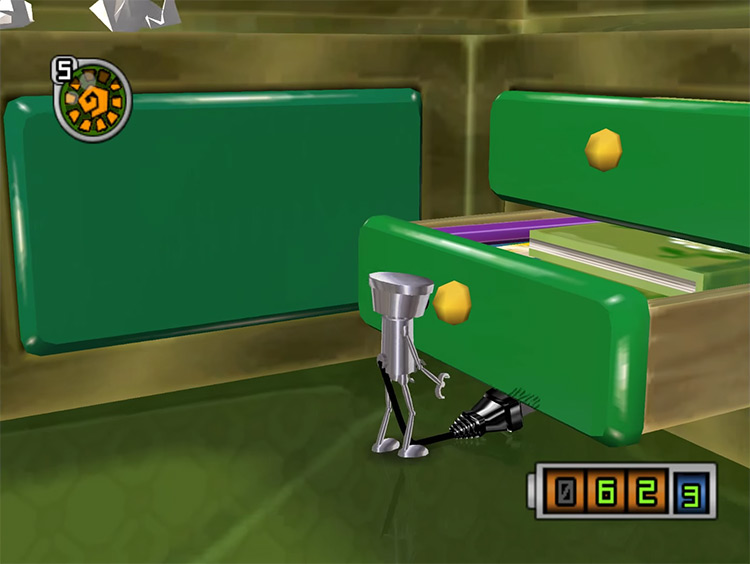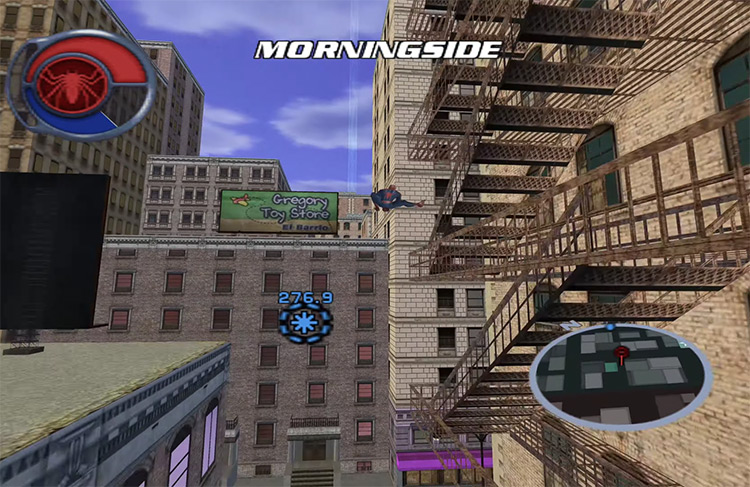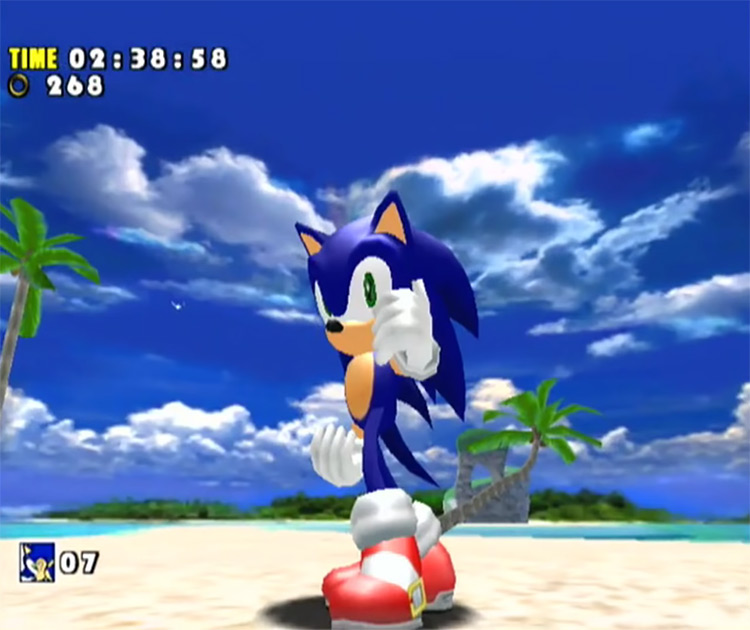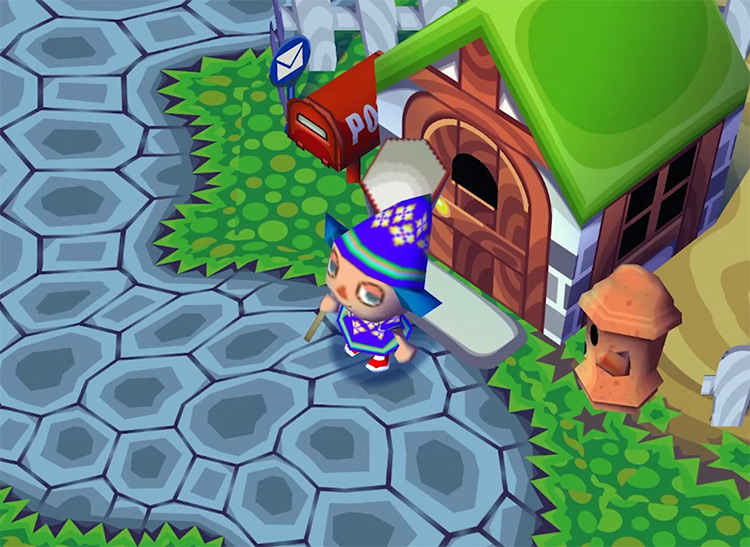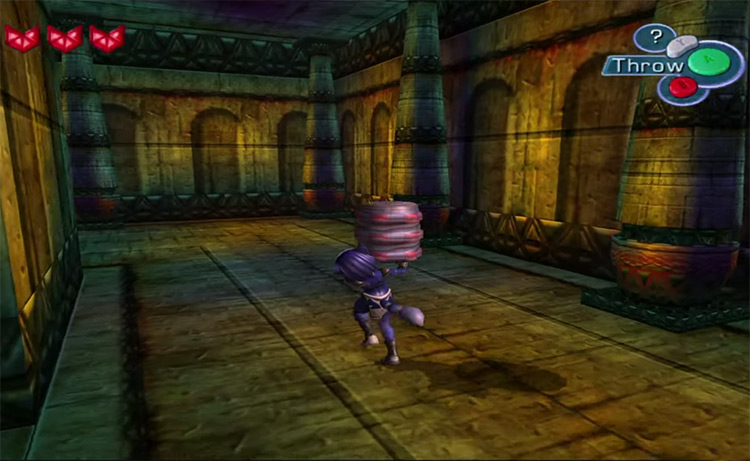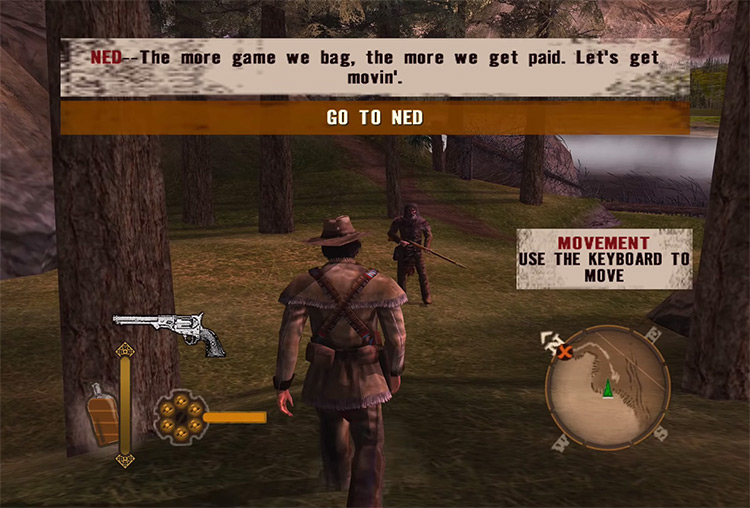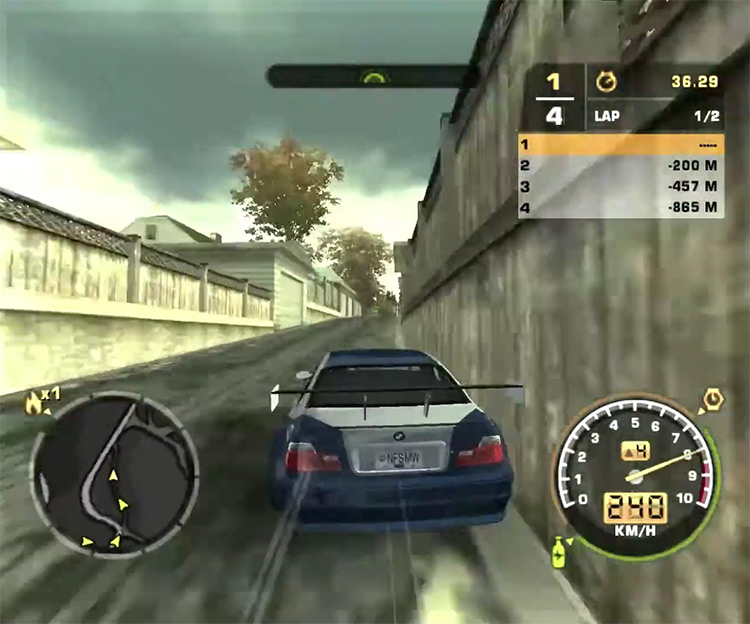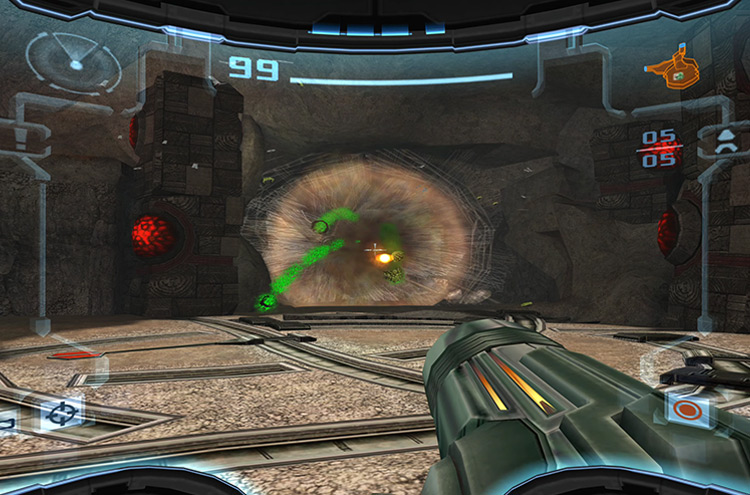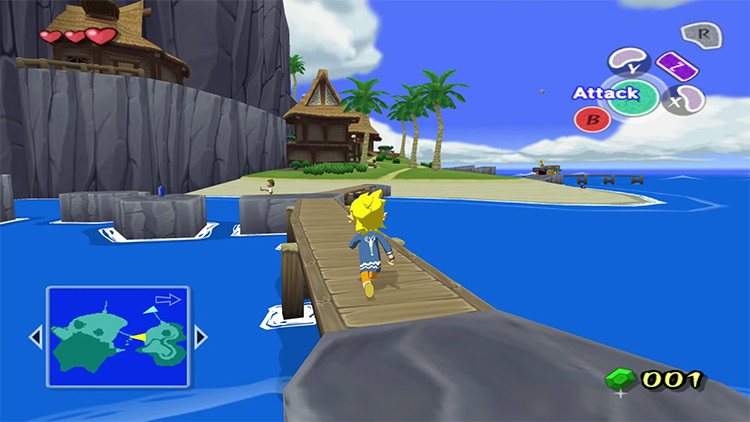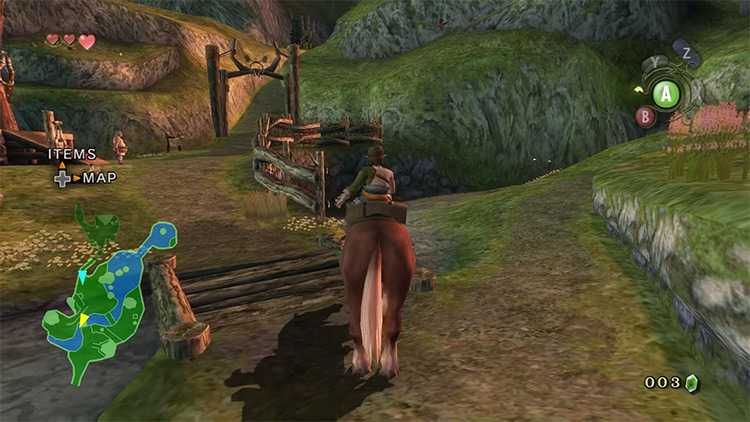These massive open worlds are remarkable. But you don’t need gargantuan worlds to give players a feeling of freedom and exploration. Sometimes, some smart design choices and a well-crafted environment are all you need to immerse players in a fictional reality. The GameCube came long before the advent of the vast simulated realities of Horizon: Zero Dawn and No Man’s Sky. But there are still plenty of exciting worlds ready to be discovered in older titles. Let’s go on a journey through the most awe-inspiring worlds waiting for us on Nintendo’s cube.
10. Chibi-Robo (2005)
When you’re just a couple inches tall, the average American home can seem as big as a city. Chibi-Robo casts you as a bite-sized humanoid robot acquired by the Sandersons to help them around the house. You’ll take care of cleaning, counseling, and even a little pest control. But beware! The “pests” are evil spider automatons. Gameplay is exceptionally varied, and – while not strictly open-world – the game environments are large and invite exploration.
9. Spider-Man 2 (2004)
One of the best open-world experiences of recent years was swinging around Manhattan in Marvel’s Spider-Man (2018) – but that didn’t just pop out from nowhere. Spider-Man games have been trying to capture the liberating feeling of swinging among skyscrapers for a while now, and Spider-Man 2 on the GameCube was surprisingly successful at it. The immersive Manhattan setting and Spidey’s web-swinging mechanics were lauded by critics and users alike. All of the action, from epic boss fights to beating up random hoodlums, is top-notch.
8. Sonic Adventure DX: Director’s Cut (2003)
Sonic Adventure’s GCN port got a lot of flak for the changes in gameplay and character design from the Dreamcast original. But for GameCube owners who’d never even heard of the Dreamcast? It was the bomb. Sonic Adventure DX features several “Adventure Fields”: hubs you can explore as one of six characters, looking for secrets, level entrances, new powers, and helpful advice from NPCs. While the Action Stages are where the “real” gameplay is, I spent most of my time jumping around these lush and mysterious environments.
7. Animal Crossing (2002)
The town in Animal Crossing isn’t as big as Hyrule or Manhattan. But seeing it change and develop as time goes on gives it a lot of depth. Especially compared to New Horizons, it’s amazing looking back at the original GCN Animal Crossing game and everything it offered at the time. While exploring the land itself is enjoyable, the game shines when you befriend your fellow villagers. These anthropomorphic animals are all adorable and surprisingly deep characters. If you want to become part of a world that evolves with you, Animal Crossing is the way to go.
6. Star Fox Adventures (2002)
Sailing the sea of stars in Star Fox 64 was one of my formative years’ most significant gaming experiences. When Nintendo announced an action-adventure sequel, I was more than a little skeptical. Among other things, I wasn’t used to video game sequels changing genres, and there’s little in common between that and a space shooter. Fortunately, the game turned out great. Despite the new focus on exploration and close-quarters combat, your journey through Sauria still features exciting Arwing sections that keep gameplay fresh and cohesive with what Star Fox is all about.
5. GUN (2005)
GUN offered the best open-world cowboy experience in the whole Wild West back in the GameCube days. This shooting-based action RPG follows Colton White, an Apache gunslinger who’s always willing to fight for his beliefs. His adventure takes the player across the American Old West, traversing populated cities and badlands full of outlaws, renegade soldiers, and vengeful native Americans. This game is ideal for those who like exploration spiced up with action and excitement. Where’s the fun in carrying around a revolver if you’re not going to use it?
4. Need for Speed: Most Wanted (2005)
Most of us don’t immediately see the connection between racers and open-world. After all, most of us picture exploring on foot – even though speeding freely around a city without any risk to your health (or others’) is often way more fun. Many Need for Speed titles were released on GCN. But Most Wanted has the most die-hard fans for a reason. Arcade racing enthusiasts talk about this racer like 90s RPG fans talk about Final Fantasy VII.
3. Metroid Prime 2: Echoes (2004)
The Metroid series has been all about exploration from the beginning. And the Metroid Prime sub-series took it to the next level with 3D environments just as complex and interconnected as the halls, ducts, and caves of Planet Zebes. The sequel, Metroid Prime 2: Echoes, exceeds its predecessor in scale and detail. Planet Aether is gigantic, full of life and ancient secrets to scan or shoot at. There’s also Dark Aether – the somber, more hostile version of the planet – which you’ll have to explore carefully as the atmosphere chips away at your health.
2. The Legend of Zelda: The Wind Waker (2003)
I never miss a chance to remind everyone just how great The Wind Waker was for its generation. The open-world experience of Ocarina of Time was hard to top, so instead of letting you loose in the fields of Hyrule one more time, Nintendo took the open world of The Wind Waker in a whole other direction – the Great Sea. Sailing the seas of this flooded world gives us a feeling of adventure and freedom unmatched by anything that had come before. You can almost feel the wind on your face and the rising humidity of approaching storms. The world is full of mysterious and mystical locations you can sail to at any time, so even if you don’t want to advance the story, there’s always something cool to do in the Great Sea.
1. The Legend of Zelda: Twilight Princess (2006)
Exploration in The Wind Waker was fun and immersive. But if you’re looking for a really immersive world to jump into, Twilight Princess is the better option. While its predecessor’s map was full of massive chunks of empty water to sail over, Twilight Princess’ world is meant to be explored on foot, by horse, or running around as a wolf. Walking on all fours as a canine gets you closer to the ground and helps you notice little details you’d miss from a human perspective. All the game’s cities, towns, farms, temples, and natural environments are ravishingly beautiful, and they all expertly match the game’s dark and gritty aesthetic.
